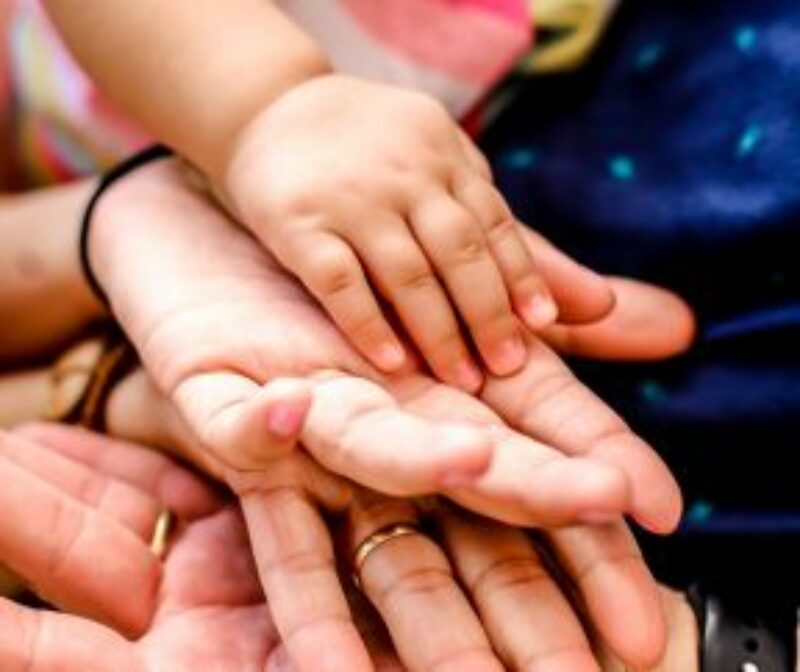Where did our built-in friends go?
Before the existence of modern transport—the locomotive, the Model T, the ferry systems or even the Oregon Trail—we lived our entire lives almost exclusively in the same place from birth to death. Because of the lack of relocation ability, communities were close knit, knowing every member to varying degrees. As larger communities began to form, so did many subcommunities of about 150 people1. As Drs. Justin Barrett and Pam King explain in their book on evolutionary psychology and thriving, not only did everyone know each other, they would have also been related to any given third of the population. Between parents and kids, aunts and uncles, cousins and grandparents, the term “village” is aptly pulled from this phase of society.
Each circle of relationships, from immediate family to close friends to acquaintances1 generally had altruistic feelings towards each other because they were all in some varying degree of relationship. If you weren’t related, you were still familiar with and to everyone in the community. This created an environment where everyone was more readily willing to help anyone in the community because of the high degree of genetic relatedness and social connection amongst the entire population. We can even see altruistic behavior in the animal kingdom when some animals help another animal at the expense of their own individual livelihood1. Just as humans, animals do not exist in autonomy, but collectively look out for one another.
The Cost of Community Breakdown
As mobility has increased through the various transportation booms, the ability to live autonomously has also increased, which has decreased overall societal altruism because we are no longer, by default, surrounded by people we know; due to the ease of autonomy, altruistic bonds are not formed between people, even among societies who experience the same (or closer!) physical proximity to one another as prior to the evolution of mobile society. Basically, more than ever before, we live both closer and further apart—an unfortunate juxtaposition.
There is even further irony in our current digital age to have both extremes of connections at the same time—hundreds or thousands of online “connections” and very few real life connections. The ability to communicate exclusively digitally, should one choose, only creates pseudo connection. “Humans increasingly live in a social environment radically different from what their social brains are naturally equipped to handle”1. There is simply no substitute for genuine, loving, in-person connection2.
It is no wonder that as this social breakdown has become more and more the norm, our culture is facing more loneliness, depression, and isolation than ever before. Even though we are more “connected” than ever through our social channels, texting, zoom calls, and email with the world at our fingertips, in 2022 over 50% of young people reported feeling deeply lonely3.
Wired for Community
“Humans are hypersocial individuals”1. We have the distinct ability to interpret and intuitively respond to hundreds of relational situations using eye contact, body language, tone of voice, and content of speech1 for perceptions of not only our relationships, but the relationships between others, which results in an enormous amount of social cues that we are able to process successfully, to varying degrees, anticipating the wants, needs, and actions of others. Additionally, we have the added ability to reflect on our own thoughts. It is truly remarkable. Understanding the human capacity for relationships can bring into focus the innate need we have to be in community with others in order to live a thriving life.
Humans thrive with others and for others in reciprocity. Just as trees need the biodiversity of the forest, so we humans need each other. According to Dr. Terry Hargrave, for individuals to thrive, they need relationships to support the twin pillars of identity—feeling known and loved—and security—feeling safe and accountable. Although our faith in God underpins these pillars, thriving requires attending to the very embodied need to be connected to other humans. In other words, balancing the pendulum of our well being is as dependent on community as it is on our sense-of-self.
Rebuilding our Village
Research shows that teenagers need about five people to invest in their lives to successfully overcome the temptations they inevitably face during this season4. In the past, this number would have been easily accommodated and even well-surpassed by the built-in social group—parents, grandparents, aunts, uncles, cousins. To empower the next generation of youth, we should consider it our responsibility (and even our joy!) to provide opportunities for them to be surrounded by adults with whom they can build these altruistic bonds and who can recreate the safety and accountability of past societal constructs.
Young people are not the only group who need to be known and loved and to feel secure (Hargrave & Sue Johnson as resources). Research also reveals that approximately half of adults report being lonely. It is not new or surprising news that Dr. Vivek Murthy, the US Surgeon General, has declared an endemic of loneliness as the greatest threat to health in the US. At Thrive, we recognize that meaningful human connection is at the core of thriving. Although relationships are natural for us, they do not always come naturally. They require intentionality, risk, vulnerability, and time.
How can we recreate the community that has dissipated with other societal advances? In modern society, we will need to work with intentionality to not only reestablish these social opportunities, but to understand the crucial role they play in society as a whole. Religious organizations and institutions offer unique resources and support for human connection. The local church is a powerful tool to strengthen community ties and rebirth the lost sense of empathy, altruistic behaviors, and motives that have become signposts of urban populations, in particular, due to the ease of anonymity and concurrent lack of accountability.
Practice
This practice can help you examine the presence, absence, and quality of the relationships in your life. Taking a few minutes to meaningfully answer these questions can provide loving guidance about steps you can pursue to broaden and deepen connections with people in your world.
- Consider your day-to-day life, or perhaps your typical overall week. How many people are you regularly connecting with?
- Ex.: Do you talk to anyone in your family? Meet up with or regularly text a friend? How many of these meetings are in person? Do you exchange friendly greetings with neighbors? Write down these names.
- Do you find it hard to come up with names to write down? (It’s ok if the answer is yes.)
- Is your list long and extensive? Do most of your interactions occur virtually or through text, email, or zoom?
- If you have names written down, take a moment and write two or three descriptive words that best characterize the nature of your relationship with a few people on your list. Examine the words you use and consider whether you have someone who both has your back and holds you accountable when you need it. Examples might be…
- Safe, loving, mutual, encouraging, reciprocal, carefully hold you accountable without shaming you.
- Unsafe, volatile, unpredictable, hostile, apathetic, accusing and shaming when they think you’ve done something wrong.
- Distant: Superficial, small-talk, gossip driven, don’t really know you.
- Identify the people on your list you feel comfortable talking to and trusting with your difficult life moments (and the joyous ones, too!)?
- If you struggled to identify people that fit this description, are you spending most of your time with people who neither know you, nor truly care about you?
- If you struggled to identify people that fit this description in your life, is there anyone you can think of who you would like to be on that list? Is there someone you believe would be a good friend for you, but, for a variety of reasons, a friendship has not materialized?
- How might you reach out and offer friendship to someone?
- What might be getting in the way of offering reciprocal friendship to another person? Note that relationships grow in reciprocity – what you give and open yourself to will make room for another to open and make room for you.
For Further Reading:
Together: The Healing Power of Human Connection in a Sometimes Lonely World by Vivek Murthy
IntraConnected: MWe (Me + We): As the Integration of Self, Identity, and Belonging by Dr. Dan Siegel
Hold Me Tight by Sue Johnson
The Reciprocating Self: Human Development in Theological Perspective by Balswick, King, & Reimer
Sticky Faith, Powell, Bradbury, Griffin.
Thriving with Stone-Aged Minds, Barrett and King.
Continue Exploring

Blog
Created for Community (Part 2): The Human Connection in Healthy Spirituality
What does healthy spirituality have to do with our relationships? While our capacity for spirituality is hard-wired, our spirituality is in fact mostly developed relationally. We learn our beliefs and practices from others.

Blog
Attachment Styles: Why Does Love Sometimes Feel so Difficult? (Part 1)
What do you need to understand about your attachment style?

Blog
Attachment Styles (Part 2): Will Love Always Feel This Hard?
Understand attachment through this case study.
Subscribe to our newsletter and get our Thrive Practices for Spiritual Health PDF!
You Got It!
